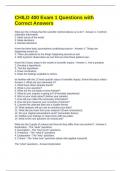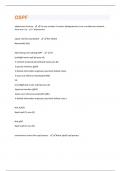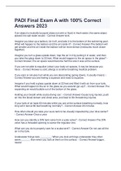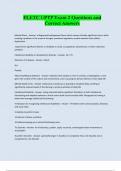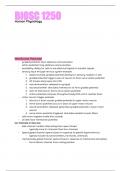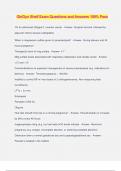Exam (elaborations)
CHILD 400 Exam 1 Questions with Correct Answers
- Course
- Institution
What are the 4 things that the scientific method allows us to do? - Answer-1. Confront unfamiliar information. 2. Make sense of the world. 3. Make decisions 4. Retrace decisions Know the three basic assumptions underlying science - Answer-1. Things are happening around us 2. There are patte...
[Show more]
